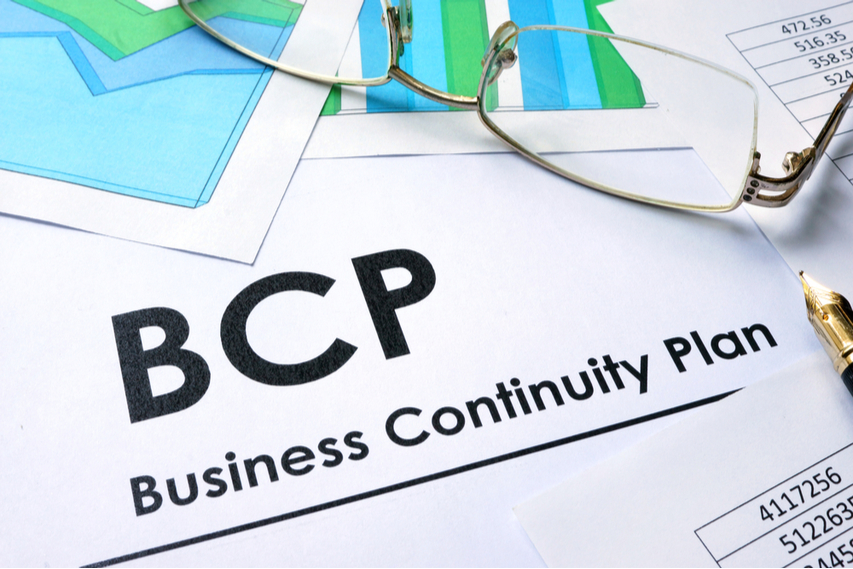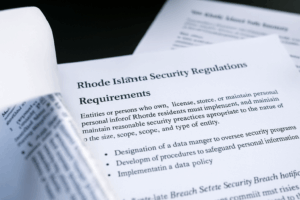
Why Every Business Needs a Comprehensive Business Continuity Plan (BCP)
An unexpected emergency, such as a natural disaster, cyberattack, or supply chain disruption, can bring a business to its knees if not properly prepared. That’s where a business continuity plan (BCP) comes into play. A well-structured BCP ensures that your company can survive and recover from unforeseen events, keeping essential operations up and running. But what exactly should be included in a business continuity plan? In this blog, we’ll break down the key elements to ensure your business remains resilient in the face of a crisis.
Key Contacts List
One of the first steps in crafting an effective BCP is identifying and compiling a list of your key contacts. This includes internal personnel, external partners, and service providers who play a crucial role in your operations. Ensure that this list is readily accessible and contains the contact details for each individual, including phone numbers, email addresses, and alternative communication channels.
This list should not only cover your immediate team members but also any third-party vendors or support services that your business relies on to function smoothly. By having this list on hand, you’ll be able to reach the right people quickly in the event of an emergency, ensuring that you can take immediate action to resolve the issue at hand.
Comprehensive IT Inventory
A well-documented IT inventory is an essential part of any BCP. This inventory should include all software, hardware, and applications used in daily business operations. Each item should be categorized as either critical or non-critical, based on its importance to the overall functioning of the business.
For each item in your inventory, include the following details:
- The name of the software, application, or hardware
- Version or model number (for software or hardware)
- Vendor name and contact information
- Warranty or support availability
- Customer support contact details
- Frequency of use within your business operations
Having an up-to-date IT inventory helps ensure that all critical systems are accounted for, and it also allows you to quickly assess the status of your operations if a system goes down.
Discover our IT Solutions for Your Industry
Worcester’s Top Managed Service Provider
Backup Information and Data Recovery
Data is the lifeblood of modern businesses, and data loss can have catastrophic consequences. For this reason, your business continuity plan must include detailed backup procedures. This section should outline how often your data is backed up, what formats are used for backups, and where those backups are stored—whether it’s on-site, off-site, or in the cloud.
In an ideal scenario, all business-critical data should be backed up regularly. It’s also crucial to specify how long backup data will be retained, and what recovery strategies are in place to ensure minimal downtime in the event of data loss.
The more robust and comprehensive your backup system, the quicker your business can bounce back after an emergency, reducing the risk of operational disruptions.
What’s Your Plan B?
Disasters are unpredictable, and having a clear “Plan B” is essential to keeping your business operations intact. A business continuity plan should outline alternative operational procedures that will be activated when a disaster occurs.
This might include:
- Allowing employees to work remotely if office facilities are compromised
- Enabling employees to bring their own devices (BYOD) to work
- Shifting key operations to cloud-based platforms to ensure accessibility and functionality
Having a backup operations plan ensures that your company doesn’t come to a halt just because your usual systems or locations are unavailable. This flexibility can significantly reduce downtime and keep essential operations running until normalcy is restored.
Floor Plans and Locations
Physical locations matter, too. In the event of an emergency, your employees need to know where to go and how to evacuate. That’s why your business continuity plan should include detailed floor plans of your office space. These floor plans should clearly mark entry and exit points, as well as emergency routes and assembly areas.
Additionally, include the locations of essential infrastructure like data centers, IT systems, and key hardware. This ensures that employees can quickly access the necessary equipment and data to continue operations, even if the office environment is temporarily disrupted.
Explore our Managed Service Offerings
Worcester’s Top Managed Service Provider

Process Definition and Standard Operating Procedures (SOPs)
Your business continuity plan should define specific processes and standard operating procedures (SOPs) to follow during a disaster. By setting clear protocols, you can eliminate confusion during an emergency, ensuring everyone knows their roles and responsibilities.
Define:
- Who is in charge during an emergency situation
- How to communicate with employees and stakeholders
- What actions need to be taken to mitigate the impact of the disaster
- How to restore critical functions and return to business as usual
By laying out these processes, your team will be prepared to respond quickly and effectively, helping to minimize disruptions and ensuring a smoother recovery.
Testing and Continuous Improvement
Developing a business continuity plan isn’t a one-time task; it’s an ongoing process. Regularly testing your plan through simulations and drills is essential to ensure that it works as expected when needed the most. Testing helps identify gaps in the plan and gives employees a chance to familiarize themselves with the procedures, reducing confusion during real-life emergencies.
Additionally, your business continuity plan should be reviewed and updated periodically. As your business grows, new risks may emerge, and old strategies may no longer be effective. Regular updates ensure that your plan remains relevant and practical, and that you are prepared for any potential disruption.
Business Continuity Is Not a One-Size-Fits-All Approach
Think business continuity planning is too complicated or overwhelming? Don’t be discouraged. Many small and medium-sized businesses (SMBs) overlook the importance of a business continuity plan because they view it as a hassle. However, the risk of not having one can prove fatal to your business down the road.
Fortunately, you don’t have to go it alone. A qualified Managed Service Provider (MSP) can help you understand the nuances of business continuity planning and tailor a plan that’s right for your business. Whether you need assistance with IT recovery strategies, data backup, or creating SOPs, an MSP can guide you through the process and ensure that your plan is both effective and practical.



